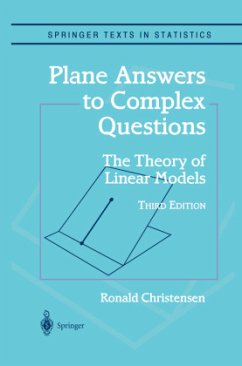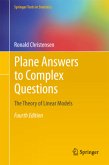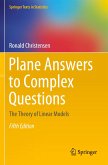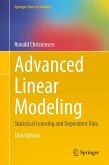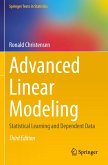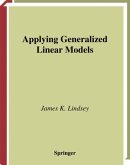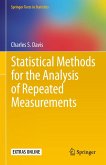This textbook provides a wide-ranging introduction to the use and theory of linear models for analyzing data. The authors emphasis is on providing a unified treatment of linear models, including analysis of variance models and regression models, based on projections, orthogonality, and other vector space ideas. Every chapter comes with numerous exercises and examples that make it ideal for a graduate- level course. All of the standard topics are covered in depth. In addition, the book covers topics that are not usually treated at this level, but which are important in their own right. The author, Ronald Christensen, is a Professor of Statistics at the University of New Mexico.
The third edition of Plane Answers includes fundamental changes in how some aspects of the theory are handled. Chapter 1 includes a new section that introduces generalized linear models. Primarily, this provides a defini tion so as to allow comments on how aspects of linear model theory extend to generalized linear models. For years I have been unhappy with the concept of estimability. Just because you cannot get a linear unbiased estimate of something does not mean you cannot estimate it. For example, it is obvious how to estimate the ratio of two contrasts in an ANOVA, just estimate each one and take their ratio. The real issue is that if the model matrix X is not of full rank, the parameters are not identifiable. Section 2.1 now introduces the concept of identifiability and treats estimability as a special case of identifiability. This change also resulted in some minor changes in Section 2.2. In the second edition, Appendix F presented an alternative approach to dealing with linear parametric constraints. In this edition I have used the new approach in Section 3.3. I think that both the new approach and the old approach have virtues, so I have left a fair amount of the old approach intact. Chapter 8 contains a new section with a theoretical discussion of models for factorial treatment structures and the introduction of special models for homologous factors. This is closely related to the changes in Section 3.3.
The third edition of Plane Answers includes fundamental changes in how some aspects of the theory are handled. Chapter 1 includes a new section that introduces generalized linear models. Primarily, this provides a defini tion so as to allow comments on how aspects of linear model theory extend to generalized linear models. For years I have been unhappy with the concept of estimability. Just because you cannot get a linear unbiased estimate of something does not mean you cannot estimate it. For example, it is obvious how to estimate the ratio of two contrasts in an ANOVA, just estimate each one and take their ratio. The real issue is that if the model matrix X is not of full rank, the parameters are not identifiable. Section 2.1 now introduces the concept of identifiability and treats estimability as a special case of identifiability. This change also resulted in some minor changes in Section 2.2. In the second edition, Appendix F presented an alternative approach to dealing with linear parametric constraints. In this edition I have used the new approach in Section 3.3. I think that both the new approach and the old approach have virtues, so I have left a fair amount of the old approach intact. Chapter 8 contains a new section with a theoretical discussion of models for factorial treatment structures and the introduction of special models for homologous factors. This is closely related to the changes in Section 3.3.
From the reviews of the fourth edition:
"Researchers and students interested in linear statistical models. ... I admire Christensen's very personal and somehow easy-going writing style. ... All in all, Christensen's fourth edition is an excellent course and reference book ... ." (Simo Puntanen, International Statistical Review, Vol. 79 (3), 2011)
"Researchers and students interested in linear statistical models. ... I admire Christensen's very personal and somehow easy-going writing style. ... All in all, Christensen's fourth edition is an excellent course and reference book ... ." (Simo Puntanen, International Statistical Review, Vol. 79 (3), 2011)

